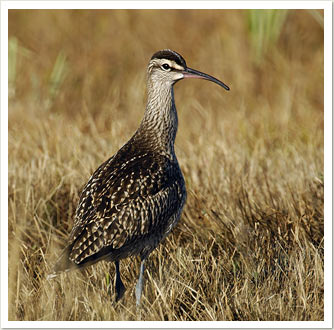|
| Whimbrel |
PHOTO: 1 2 |
 |
|
 |
 |
| Whimbrels are striking migratory shorebirds that nest in high latitude Canada and migrate south, mostly to South America. Characterized by its long, decurved beak, the Whimbrel is one of our most distinctive shorebirds. Whimbrel use their bill to probe deeper in the mud and sand than other shorebirds can, pulling out marine invertebrates (like worms) from deep below the surface. You can see them on the beach in summer and early fall when some pause during migration to feed on Plymouth Harbor's productive mud flats |
|
|